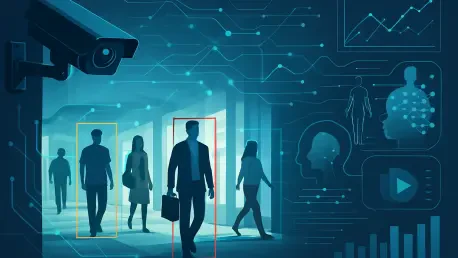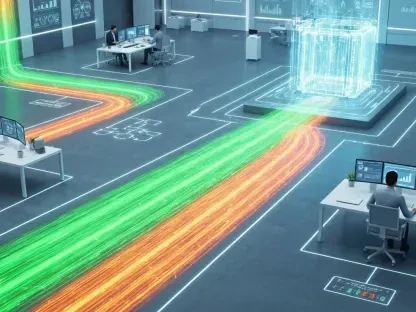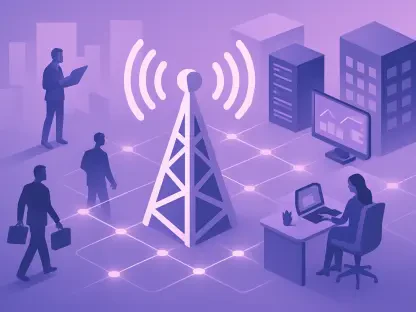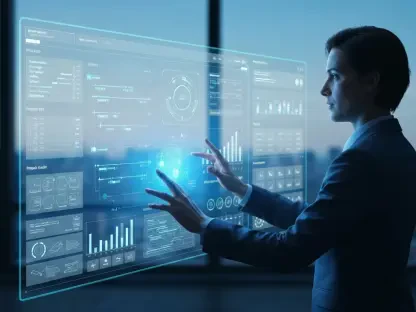In an era where data is often described as the new oil, the video analytics market stands out as a prime example of how artificial intelligence (AI) can transform raw information into actionable intelligence, revolutionizing industries from security to retail. With the ability to process vast amounts of video footage in real-time, AI is enabling organizations to enhance safety, optimize operations, and predict future challenges with unprecedented accuracy. The market is on a steep upward trajectory, projected to expand from USD 3.5 billion in 2025 to a staggering USD 10.5 billion by 2035, reflecting a compound annual growth rate (CAGR) of 11.7%. This growth is not merely a statistic but a testament to the profound impact of AI-driven solutions in addressing pressing global needs. As security threats escalate and smart cities emerge, the demand for sophisticated video analytics tools continues to soar, positioning this technology at the forefront of modern innovation.
The Power of AI in Shaping Video Analytics
Transforming Data into Actionable Insights
The backbone of the video analytics market’s expansion lies in AI’s remarkable capacity to convert endless streams of video data into insights that organizations can act upon swiftly and effectively. Machine learning (ML) algorithms, a critical component of AI, have refined capabilities like facial recognition and behavior analysis, allowing systems to identify individuals or detect suspicious activities with high precision. This transformation is evident in sectors ranging from public safety to corporate environments, where real-time monitoring has become indispensable. The ability to analyze video feeds instantly means that potential threats can be identified and mitigated before they escalate, providing a level of security that was once unimaginable. Furthermore, the scalability of AI systems ensures that even as data volumes grow, the technology remains efficient, catering to the needs of sprawling urban centers and multinational corporations alike.
Beyond immediate security applications, the integration of AI in video analytics fosters deeper operational understanding by uncovering patterns that human analysis might overlook. Retailers, for instance, can track customer movements to optimize store layouts, while transportation hubs use these insights to streamline passenger flow. The continuous improvement of AI algorithms through learning from new data ensures that the systems become more accurate over time, adapting to evolving environments. This adaptability is a key driver behind the widespread adoption of video analytics, as industries recognize the value of staying ahead of challenges through data-driven decision-making. The synergy of AI and video analytics is not just a technological advancement but a strategic asset that reshapes how organizations operate in a complex world.
Enhancing Accuracy with Advanced Technologies
AI’s role in video analytics extends to enhancing the accuracy of surveillance systems through cutting-edge technologies that push the boundaries of what’s possible. Innovations such as deep learning models enable systems to distinguish between normal and anomalous behavior in crowded or low-light conditions, addressing previous limitations in video analysis. This precision is crucial for applications like border security or event management, where false positives can lead to costly errors or delays. By leveraging vast datasets to train AI models, developers have created tools that not only detect but also interpret complex scenarios, providing a clearer picture of unfolding events. The result is a level of reliability that builds trust among users, encouraging further investment in these solutions.
Additionally, the integration of AI with other emerging technologies amplifies the effectiveness of video analytics in real-world settings. Cloud computing, for instance, allows for seamless storage and processing of massive video datasets, ensuring that systems remain responsive even under heavy loads. Meanwhile, edge computing brings analysis closer to the source of data, reducing latency and enhancing real-time decision-making capabilities. These technological synergies are pivotal in expanding the reach of video analytics, making it a viable solution for diverse environments, from small businesses to sprawling smart city infrastructures. As AI continues to evolve, its ability to refine and perfect video analytics systems promises to unlock even greater potential across industries.
Key Factors and Future Horizons
Security Needs and Smart City Initiatives
One of the most significant forces propelling the video analytics market forward is the escalating need for enhanced security in response to rising threats like crime and terrorism. Governments and private entities are increasingly turning to AI-powered surveillance systems to safeguard public spaces, critical infrastructure, and corporate assets. These systems offer real-time threat detection, enabling rapid responses that can prevent incidents before they escalate. The urgency of such measures is evident in high-risk areas where traditional monitoring falls short, driving substantial investments in advanced video analytics. This trend reflects a global recognition that proactive security measures are no longer optional but essential in maintaining safety and order in an unpredictable world.
Equally impactful is the role of video analytics in the development of smart cities, where AI is harnessed to manage urban challenges like traffic congestion and public safety. By analyzing video feeds from city-wide camera networks, authorities can optimize traffic flow, reduce accidents, and monitor crowd behavior during large events. These applications not only improve the quality of urban life but also demonstrate the versatility of AI-driven solutions in addressing multifaceted issues. The push for smart city initiatives worldwide is a catalyst for market growth, as municipalities seek scalable technologies to support sustainable development. As urbanization accelerates, the reliance on video analytics to create safer, more efficient cities is set to intensify, cementing its place as a cornerstone of modern infrastructure.
Business Intelligence and Operational Efficiency
In the realm of business, AI-powered video analytics is redefining how companies gather intelligence and enhance operational efficiency, particularly in sectors like retail and transportation. Retailers are leveraging this technology to analyze customer behavior, tracking foot traffic to determine peak shopping times or popular product displays. Such insights enable businesses to refine store layouts, improve customer experiences, and curb losses due to theft, directly impacting profitability. The precision of AI in identifying patterns from video data provides a competitive edge, allowing retailers to make informed decisions that align with consumer preferences. This application underscores the broader potential of video analytics as a tool for strategic growth beyond traditional security uses.
Transportation systems, too, benefit immensely from AI-driven video analytics, using it to monitor and manage operations in real-time for greater efficiency. Airports and train stations employ these systems to track passenger movements, detect bottlenecks, and ensure smooth operations even during peak times. The ability to anticipate and address logistical challenges through video insights reduces delays and enhances safety, offering a seamless experience for travelers. Moreover, integration with IoT devices allows for a more connected infrastructure, where data from multiple sources converges to provide a holistic view of operations. This convergence is a driving force behind the adoption of video analytics in transportation, illustrating how AI can transform complex systems into streamlined, responsive networks.
Real-Time Capabilities with 5G
The advent of 5G connectivity is poised to revolutionize video analytics by enabling high-definition, real-time video streaming that supports a host of innovative applications. With faster data transmission and reduced latency, 5G ensures that video feeds can be analyzed instantly, a critical factor in scenarios requiring immediate action, such as emergency response or live event security. This capability opens up new possibilities, from supporting autonomous vehicles that rely on real-time visual data to navigate safely, to enhancing surveillance systems that can detect and respond to threats as they unfold. The impact of 5G on video analytics is a game-changer, expanding the scope of what these systems can achieve in dynamic environments.
Furthermore, the enhanced bandwidth of 5G networks allows for the simultaneous processing of multiple high-quality video streams, a necessity for large-scale implementations like smart city surveillance or industrial monitoring. This scalability means that even as the demand for video analytics grows, the infrastructure can keep pace without compromising performance. Industries are already exploring how this technology can support advanced use cases, such as remote diagnostics in healthcare or real-time quality control in manufacturing. The synergy between 5G and AI-driven video analytics is set to unlock unprecedented levels of connectivity and responsiveness, paving the way for innovations that redefine operational and security paradigms across sectors.
Predictive Analytics and Proactive Solutions
A transformative trend in the video analytics market is the shift toward predictive analytics, where AI enables organizations to anticipate issues before they occur, moving beyond mere reaction to proactive intervention. By analyzing historical and real-time video data, systems can identify patterns that signal potential security threats or operational inefficiencies, allowing for preemptive measures. This capability is particularly valuable in high-stakes environments like law enforcement, where predictive policing can help allocate resources to prevent crime, or in logistics, where foreseeing bottlenecks can save time and costs. The strategic advantage of staying ahead of problems is reshaping how industries approach risk management and planning.
This predictive power also extends to enhancing customer experiences and optimizing business processes in less critical but equally important ways. Retailers, for example, can predict shopping trends and adjust inventory or staffing accordingly, while public venues can anticipate crowd surges and enhance safety protocols. The ability of AI to learn and adapt over time ensures that these predictions become increasingly accurate, building confidence in the technology’s reliability. As predictive analytics continues to evolve, its integration with video analytics promises to create smarter, more resilient systems that not only respond to the present but actively shape a more secure and efficient future.
Balancing Innovation with Challenges
Despite the immense potential of AI-driven video analytics, significant challenges like high implementation costs pose barriers to widespread adoption, particularly for smaller organizations. The expense of acquiring advanced hardware, software, and the necessary infrastructure can be prohibitive, limiting access to cutting-edge solutions. While larger enterprises and governments may have the resources to invest, smaller businesses often struggle to justify the upfront costs, even with long-term benefits in mind. Addressing this disparity through cost-effective solutions or scalable subscription models could democratize access, ensuring that the advantages of video analytics are not confined to well-funded entities but reach a broader audience.
Privacy concerns also loom large, as the pervasive use of surveillance and facial recognition technologies raises ethical questions about data protection and individual rights. Public unease over constant monitoring and the potential misuse of personal information has sparked debates and calls for stricter regulations. Industry stakeholders must navigate this complex landscape by prioritizing transparency and adhering to diverse regulatory frameworks across regions. Developing AI systems that balance security imperatives with respect for privacy is essential to maintaining public trust. Overcoming these challenges requires a concerted effort to align technological innovation with societal values, ensuring sustainable growth for the video analytics market.
Reflecting on Milestones and Next Steps
Looking back, the journey of the video analytics market unfolded as a story of remarkable progress, driven by AI and machine learning breakthroughs that turned static video into dynamic insights. The market’s expansion reflected a growing reliance on these tools to address security threats, optimize business operations, and build smarter cities, with each advancement building on the last to create a robust foundation. Challenges such as cost barriers and privacy debates were acknowledged and tackled through ongoing dialogue and innovation, shaping a technology that strived to serve both efficiency and ethics. This historical perspective highlighted how far the industry came in adapting to global demands while laying the groundwork for future growth.
Moving forward, the focus should shift to actionable strategies that ensure the continued evolution of video analytics in a balanced manner. Stakeholders are encouraged to invest in research that lowers implementation costs, making the technology accessible to diverse users, while also developing frameworks that prioritize data privacy without stifling innovation. Collaboration between governments, tech providers, and communities will be key to crafting regulations that protect rights while enabling progress. As 5G and predictive analytics redefine possibilities, the industry must remain agile, exploring new applications that address emerging needs. These steps will solidify video analytics as a transformative force, driving safer, smarter, and more connected societies.









